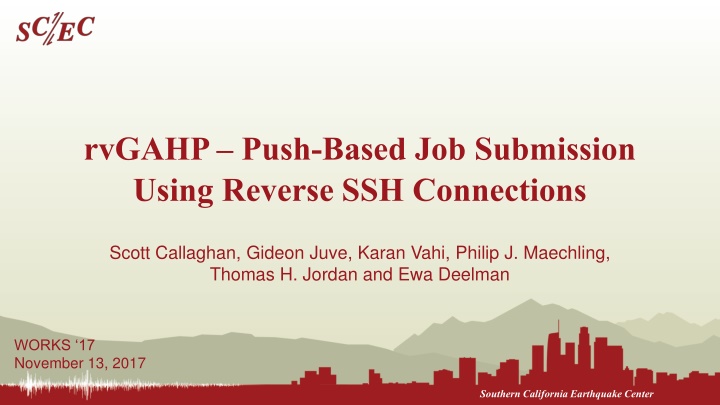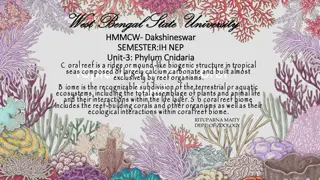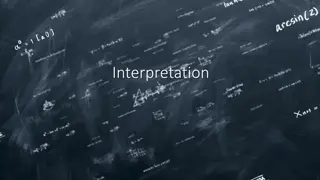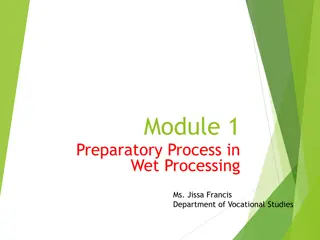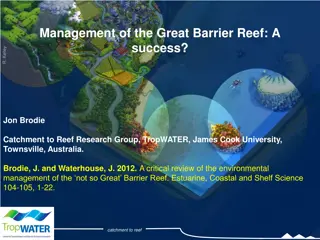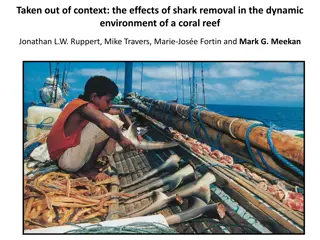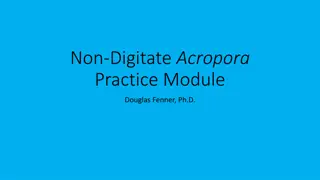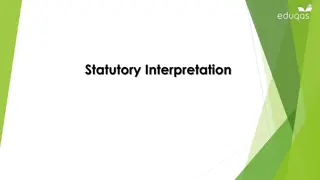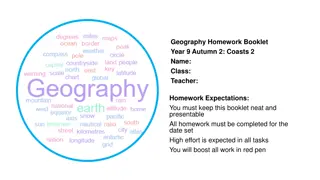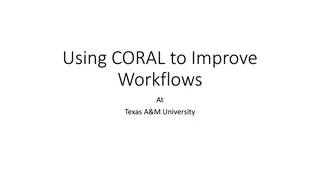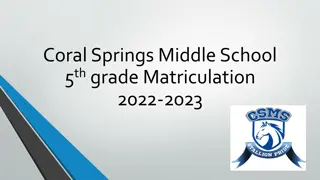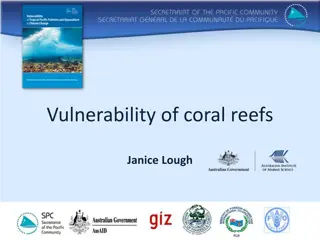Coral Bleaching and Area Interpretation
This presentation delves into coral bleaching and the process of finding and interpreting the area under a curve. It also discusses a salary progression scenario and calculates earnings for the first 9 weeks. Explore the visual aids provided for a clearer understanding.
Download Presentation

Please find below an Image/Link to download the presentation.
The content on the website is provided AS IS for your information and personal use only. It may not be sold, licensed, or shared on other websites without obtaining consent from the author.If you encounter any issues during the download, it is possible that the publisher has removed the file from their server.
You are allowed to download the files provided on this website for personal or commercial use, subject to the condition that they are used lawfully. All files are the property of their respective owners.
The content on the website is provided AS IS for your information and personal use only. It may not be sold, licensed, or shared on other websites without obtaining consent from the author.
E N D
Presentation Transcript
rvGAHP Push-Based Job Submission Using Reverse SSH Connections Scott Callaghan, Gideon Juve, Karan Vahi, Philip J. Maechling, Thomas H. Jordan and Ewa Deelman WORKS 17 November 13, 2017 Southern California Earthquake Center
Motivation Scientific workflows continue to scale up Require automated resource provisioning on largest available clusters Two main approaches: Push-based: requests initiate from workflow queue Pull-based: requests initiate from remote resource Both have limitations Push-based: not viable on systems with two-factor authentication Pull-based: risk of high overhead with heterogeneous workloads rvGAHP: alternative approach 3/17/2025 1 Southern California Earthquake Center
Push-Based Approach Resource requests are on-demand, initiating from runtime manager Request waits in remote queue, starts up, runs workflow task Efficient use of remote resources: nodes only used when workflow tasks are being run Requires automated authentication to remote system 3/17/2025 2 Southern California Earthquake Center
Pull-Based Approach Resource requests initiate from remote resource ( pilot job ) Resources advertised to workflow submission host for task scheduling Requires authentication from remote system to workflow host Can incur overhead Waiting for workflow task Mismatch of pilot job to task size and length 3/17/2025 3 Southern California Earthquake Center
Summary of Approaches Push-based Potential issues with automated authentication Little overhead: node-hours burned are used for workflow work Pull-based Authentication performed from remote system to workflow host Risk of high overhead, especially for heterogeneous workloads Would like solution with overhead characteristics of push-based, but with authentication flexibility of pull-based 3/17/2025 4 Southern California Earthquake Center
rvGAHP Overview Developed new solution, reverse GAHP (rvGAHP) Implementation of text-based GAHP protocol Push-based approach Does not require automated authentication to remote resource, just to workflow submission host Does require daemon running on remote resource Integrates cleanly with HTCondor 3/17/2025 5 Southern California Earthquake Center
rvGAHP Details 1. rvgahp_server is started on remote resource GridManager File transfer condor_ft-gahp 2. rvgahp_server establishes ssh connection to workflow submission host and starts rvgahp_proxy fork() fork() 3. When remote GAHP job is submitted, GridManager launches rvgahp_client 4. rvgahp_client, via rvgahp_proxy, starts appropriate GAHP process on remote resource socketpair rvgahp_server PBS/LSF/SGE rvgahp_client qsub/ qstat/ qdel fork() UNIX socket fork() 5. A socketpair is set up between remote GAHP process and ssh process, establishing communication between GridManager and remote GAHP process socketpair rvgahp_proxy ssh batch_gahp ssh 6. Another ssh process and rvgahp_proxy are started by the rvgahp_server (not shown) GAHP Workflow Submission Host Remote Resource 3/17/2025 6 Southern California Earthquake Center
Application Overview Probabilistic Seismic Hazard Analysis (PSHA) What will ground motion be in the next 50 years? Building engineers Insurance companies Disaster planners PSHA is performed by 1. Assembling a list of earthquakes 2. Calculating the shaking of each 3. Combining shaking with probability SCEC CyberShake project simulation-based approach to step 2 3/17/2025 7 Southern California Earthquake Center
Resource Requirements Computational requirements per site Stage Mesh Creation SGT Generation Seismogram Synthesis MPI CPU Other Code Type MPI CPU MPI GPU Nodes 240 800 240 1 Walltime 0.4 hrs 1.0 10 0.1 2 Sequential 200-400 sites required to complete study Parallelism dominated by SGT generation 2 jobs of 800 GPU nodes x ~1 hour Cost dominated by seismogram synthesis 240 nodes for ~10 hours CyberShake workflow schematic 3/17/2025 8 Southern California Earthquake Center
CyberShake Workflows Each run for a single site consists of a workflow Software stack: Pegasus-WMS to create workflow description, plan for execution HTCondor for runtime execution Globus GRAM for communication between workflow host and remote system CyberShake study consists of running hundreds of sites Site parallelism of 10-30 Able to split CyberShake studies to run on multiple resources 3/17/2025 9 Southern California Earthquake Center
Current Solutions for CyberShake CyberShake requires 800-node GPU jobs 6.5x faster than CPU version Targeted NCSA Blue Waters and OLCF Titan For Blue Waters: push solution works well When jobs appear in HTCondor queue, GRAM submits them over the network to be translated and scheduled in Blue Waters queue For Titan: push solution unavailable due to authentication policy Two-factor with fob Proxies only issued for data transfer nodes Decided to try pull-based approach with HTCondor pilot jobs 3/17/2025 10 Southern California Earthquake Center
CyberShake with Pull-Based Approach In 2015, used pull solution using HTCondor pilot jobs Pilot daemon running on login node queried HTCondor queue on workflow submission host for jobs When idle jobs found, pilot job submitted to Titan queue Because of variability in task sizes, 4 different sizes of pilot jobs Introduced complexity and possibility of errors Pull solution resulted in only 68% resource utilization Scheduling overhead Tradeoff between pilot jobs terminating before workflow tasks, and pilot jobs sitting idle 3/17/2025 11 Southern California Earthquake Center
CyberShake with rvGAHP In 2017, performed 31-day CyberShake study on Titan using rvGAHP rvgahp_server daemon ran on Titan login node 13,334 jobs submitted through rvGAHP 10 minutes 9 hours walltime 1 240 nodes wide 450,000 node-hours total Increased resource utilization from 68% to 97% Savings of ~130,000 node hours Decreased delay per job from 9.2 to 0.6 hrs 3/17/2025 12 Southern California Earthquake Center
Conclusion rvGAHP provides new approach for remote resource provisioning Reduced overhead of push-based approaches Runs on systems requiring two-factor authentication Requires little of application developers already using HTCondor Very effective for real-world seismic hazard workflow application Increases efficiency on current systems Opens up new systems for scientific workflows 3/17/2025 13 Southern California Earthquake Center
Thanks! 3/17/2025 14 Southern California Earthquake Center
